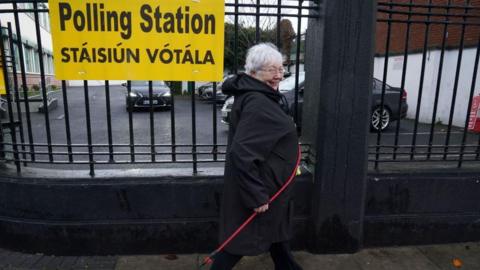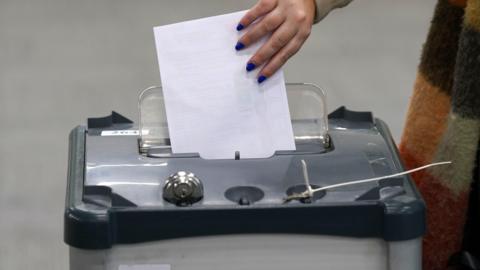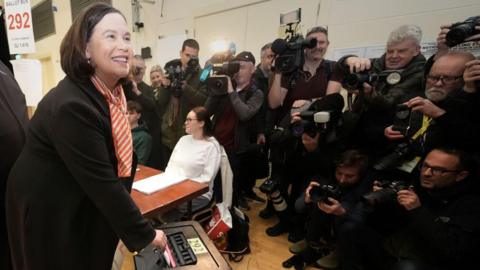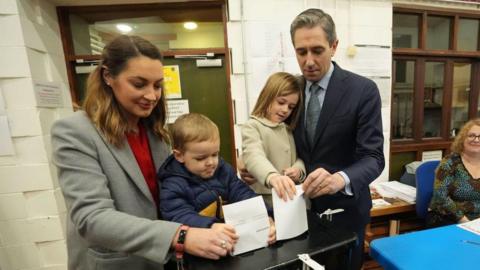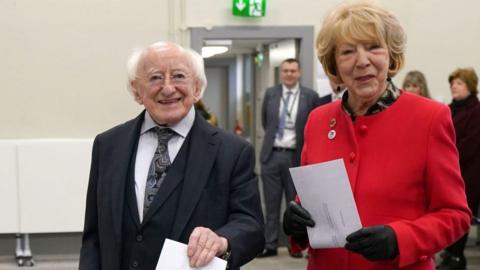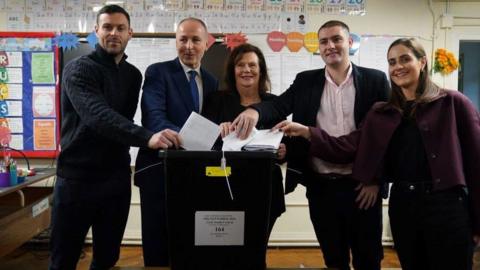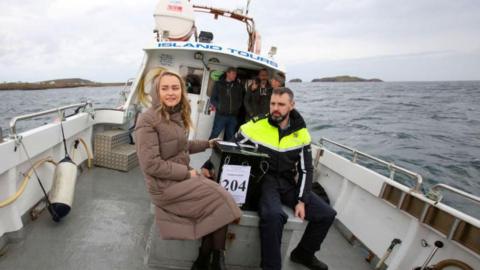An exit poll in the Republic of Ireland suggests that Sinn Féin has 21.1% of first preference votes with Fine Gael having 21%, making the result of the general election too close to call.
The poll indicates Fianna Fáil has 19.5% of first preference votes.
It also suggests that 20% of the second preference votes goes to Fianna Fáil and Fine Gael, with Sinn Féin at 17%.
The exit poll was published at 22:00 local time and was carried out by Ipsos B&A for RTÉ, The Irish Times, TG4 and Trinity College Dublin. It has a margin of error of 1.4%.
